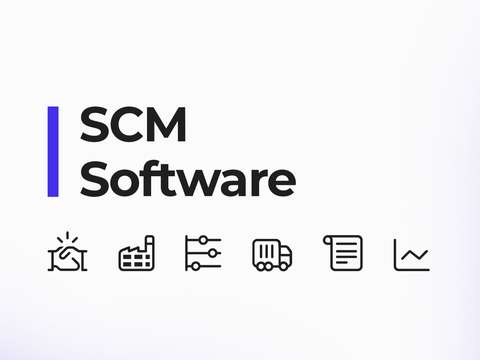TL,DR:
- 86% of buyers are willing to pay more for better customer experience
- 79% of consumers are more loyal to brands that deliver personalized experiences
- 73% of consumers consider customer experience a crucial factor in purchasing decisions
- Implementing the tips in this article ensures a flawless online shopping experience, boosting loyalty and conversions
Delivering the best ecommerce customer experience is how successful businesses stay ahead in the commerce market.
Discussions in e-commerce communities, like Reddit’s eCommerce forum, highlight how seamless and personalized cx builds loyalty.
But that's not all.
Insights from discussions on the reality of starting an ecommerce business reveal that new entrepreneurs often overlook the importance of shopping behavior, even though it is key to long-term growth and delighting customers at every stage.
Meeting expectations is essential for turning every buyer into a loyal customer and driving sustainable growth. Companies that focus on measuring customer experience metrics and usepost-purchase platforms can unlock significant revenue growth.
This guide provides a complete analysis of the trends shaping e-commerce experiences, along with actionable tips and real case study and examples.
By implementing these best practices, you can create a transparent, seamless, and flexible shopping experience that builds trust, increases satisfaction, and makes every interaction memorable.
Whether you're a manager, marketer, or entrepreneur, this guide will show you how to improve eCommerce customer experience as a tool for transformation.
Ecommerce CX Checklist for 2025
| Trend/Strategy | Priority | Necessary Tools | Responsible |
|---|---|---|---|
| Personalize the customer experience using data-driven insights | High | AI tools, CRM, email marketing platforms | Marketing, IT |
| Optimize website performance for faster loading times | High | Google PageSpeed Insights, GTmetrix, CDN | Web Development, IT |
| Ensure mobile-friendly shopping experiences | High | Responsive design tools, mobile testing | Web Development |
| Offer more shipping options at checkout to increase conversions | Medium | Shipping management software, rate calculators | Operations, Logistics |
| Use branded tracking pages to reinforce your brand post-purchase | Medium | Page customization tools, analytics | Marketing, Development |
| Create an engaging unboxing experience | Low | Packaging design, marketing materials | Marketing, Design |
| Simplify returns and exchanges with a self-service portal | High | Returns management platform | Customer Support |
| Transform returns into revenue with store credit strategies | Medium | Marketing tools, rewards platform | Marketing, Finance |
| Utilize shipping rules to select the fastest or most cost-effective carrier | High | Rate comparison and transit time software | Logistics |
| Display customer reviews and testimonials prominently | Medium | Review management platforms, social media | Marketing |
| Offer real-time order tracking updates through WhatsApp or SMS | High | Messaging automation tools | Marketing, IT |
| Automate customer support tickets for faster issue resolution | High | Automated ticketing system | Customer Support, IT |
| Enable live chat support for immediate assistance | High | Live chat platform | Customer Support |
| Use delivery notifications to enhance the post-purchase experience | Medium | Notification platform, email marketing | Marketing |
| Verify shipments to reduce errors and build trust | High | Shipment verification system | Logistics, IT |
| Send abandoned cart reminders | High | Marketing automation tools | Marketing |
| Collect customer feedback | High | Survey tools, review platforms | Marketing, Support |
| Create a comprehensive FAQ page for self-service support | Medium | CMS, web design tools | Customer Support, IT |
| Offer product bundling discounts | Medium | Product management platform, discount software | Marketing, Sales |
| Add a wishlist feature to your eCommerce site | Low | Product management platform | Web Development, Marketing |
| Partner with social media influencers to promote your brand | High | Social media platforms, influencer management tools | Marketing |
| Display clear shipping and return policies on your website | Medium | CMS, web design tools | Marketing, Development |
| Add localized content for international customers | Medium | Translation tools, geolocation | Marketing, Development |
| Implement automated product recommendations based on order history | High | Recommendation engine, CRM | Marketing, IT |
| Offer instant product swaps for exchanges | High | Returns management platform | Customer Support, Logistics |
| Streamline the checkout process for faster conversions | High | Payment platform, form validation tools | Web Development, Marketing |
As you can see, applying the listed techniques requires a large number of tools and systems. However, you can simplify this by using all-in-one software like Outvio.
Trends and strategies to enhance the eCommerce customer experience (2025 list)
1. Personalize the customer experience using data-driven insights
Use customer data such as purchase history and post purchase behavior to create personalized shopping experiences. Personalization enhances customer satisfaction and loyalty by making shoppers feel understood and valued.
Leverage AI tools for dynamic recommendations, customized email campaigns, and tailored landing pages.
- Segment customers by behavior, preferences, or demographics to offer targeted experiences
- Integrate customer data from multiple platforms like CRM, email, and social media
- Test personalized campaigns to identify which strategies drive the highest engagement
2. Optimize website performance for faster loading times
Optimize your website by compressing images, reducing code complexity, and using a CDN.
Faster load times improve SEO rankings and reduce bounce rates, directly impacting conversions. Regular audits ensure ongoing performance improvements.
- Use tools like Google PageSpeed Insights or GTmetrix to measure performance
- Implement lazy loading for images and videos to prioritize visible content
- Choose a reliable hosting provider optimized for eCommerce websites
3. Ensure mobile-friendly shopping experiences
Design a responsive website that adapts to all screen sizes and simplifies navigation for mobile users.
A mobile-friendly eCommerce site increases conversions and captures the growing mobile-first customer base. Focus on fast loading, intuitive layouts, and mobile-specific features like tap-to-pay.
- Enable mobile autofill for customer information during checkout
- Use sticky menus or buttons to make navigation easier on small screens
- Test the mobile experience regularly on different devices and browsers
4. Offer more shipping options at checkout to increase conversions
Provide a range of delivery options, including express, economy, overnight, same-day shipping, or delivery on demand.
Offering flexibility reduces cart abandonment and ensures customers find options that match their needs. Clearly display shipping costs and delivery times upfront.
- Allow customers to select delivery preferences
- Partner with multiple carriers to expand shipping capabilities
- Use tools to calculate and display estimated delivery times during checkout
5. Use branded tracking pages to reinforce your brand post-purchase
Create custom tracking pages with your logo, colors, and messaging. These pages maintain engagement and build trust by offering real-time updates.
Incorporate upselling opportunities or promotional banners to drive repeat purchases.
- Include product recommendations or loyalty program links on the tracking page
- Offer FAQs or support options directly on the tracking page for added value
- Monitor analytics on tracking pages to refine their performance and effectiveness
6. Create an engaging unboxing experience
Design an unboxing experience with branded, high-quality packaging and include extras like thank-you notes or small gifts.
A memorable unboxing enhances perceived value, encourages social sharing, and builds long-term loyalty.
- Use eco-friendly materials to align with sustainability-conscious customers
- Add QR codes linking to tutorials, discounts, or brand stories
- Regularly update packaging design to stay fresh and exciting for repeat buyers
7. Simplify returns and exchanges with a self-service portal
Offer a self-service returns portal that allows customers to initiate returns, choose exchange options, and track progress.
A streamlined process reduces frustration and builds trust, encouraging repeat purchases.
- Include a guide or video walkthrough on using the returns portal.
- Set clear return windows and policies to manage customer expectations.
- Allow customers to opt for store credit with added bonuses to retain revenue.
8. Transform returns into revenue with store credit strategies
Encourage customers to choose store credit over returns by offering bonuses, such as additional credit or exclusive discounts.
This retains revenue while incentivizing repeat purchases.
- Promote the store credit option clearly during the return process
- Use gamification, such as loyalty points, to make store credit more appealing
- Offer time-limited bonuses for store credit usage to drive urgency
9. Utilize shipping rules to select the fastest or most cost-effective carrier
Automate carrier selection based on criteria like delivery speed, cost, or location. This ensures customers receive their orders promptly while optimizing shipping expenses for your business.
- Set rules for prioritizing local carriers for regional deliveries
- Use software to compare rates and transit times across carriers
- Regularly evaluate carrier performance and update rules as needed
10. Display customer reviews and testimonials prominently
Showcase reviews on product pages and marketing materials to build trust and aid decision-making. Positive reviews increase conversions and reinforce credibility.
- Request reviews through post-purchase emails or loyalty incentives
- Highlight reviews with images or videos for more authenticity
- Use filters to display the most relevant reviews for specific customer queries
11. Offer real-time order tracking updates through WhatsApp or SMS
Use automated messaging systems to send real-time order updates via WhatsApp or SMS. Notifications keep customers informed about each stage of their order, such as shipping, delivery, or delays.
These instant updates reduce customer anxiety and enhance trust. Include clickable tracking links directly in the messages for seamless access.
- Personalize WhatsApp or SMS messages with the customer’s name, order details, and expected delivery times
- Proactively send updates about any changes, such as delays, rerouting, or rescheduling
- Utilize WhatsApp or SMS for critical time-sensitive updates like “Your order is out for delivery” or “Your order has been delivered.”
12. Automate customer support tickets for faster issue resolution
Use an automated ticketing system for eCommerce to create, prioritize, and assign tickets based on issue types, such as delivery delays or damaged items.
A streamlined system ensures faster resolutions and enhances customer satisfaction.
- Tag tickets with keywords like “refund” or “shipping” to route them to the appropriate team.
- Implement auto-replies to acknowledge customer queries and set expectations for response times.
- Analyze ticket trends to identify recurring issues and optimize processes
13. Enable live chat support for immediate assistance
Add an eCommerce live chat feature to your website or order tracking page to handle real-time customer inquiries. Live chat improves resolution times and reduces friction for customers seeking help.
- Train chat agents to handle common shipping and return-related questions efficiently.
- Offer chatbots to answer FAQs, escalating complex issues to human agents.
- Monitor chat performance metrics like resolution time and satisfaction ratings to improve service.
14. Use delivery notifications to enhance the post-purchase experience
Send automatic shipping updates through email or SMS, including proof of delivery and customer feedback requests. This keeps customers informed and reassures them about their purchase.
- Include a link to track the package directly in the notification
- Follow up with a “rate your experience” message to gather customer feedback
- Add links to support resources in delivery notifications for easy problem-solving
15. Verify shipments to reduce errors and build trust
Implement a verification process to ensure the correct items are shipped. Use barcode scanning or weight checks to confirm accuracy before dispatching orders.
- Conduct random quality checks to maintain high shipping standards
- Train warehouse staff on accurate packing and verification procedures
- Use inventory management tools to track discrepancies and prevent future errors
16. Send abandoned cart reminders
Remind customers about items left in their shopping cart. These reminders should include a direct link to the cart, making it easy for customers to resume their purchase.
Adding urgency, such as limited-time discounts, can improve conversion rates.
- Personalize the message with the customer’s name and the product details left in the cart
- Include an incentive, like free shipping or a discount, to encourage immediate action
- Use follow-up messages at optimized intervals, such as 1 hour, 24 hours, and 48 hours post-abandonment
17. Collect customer feedback
After delivery, send an automated message asking customers to rate their experience or provide feedback.
Include a direct link to a short survey or review platform. This not only improves customer satisfaction but also gives actionable insights to optimize operations.
- Ask specific questions, such as “Was your order delivered on time?” or “How satisfied are you with your purchase?”
- Incentivize feedback by offering discounts or loyalty points for completed surveys
- Use collected feedback to identify trends and improve fulfillment processes
18. Create a comprehensive FAQ page for self-service support
Build an easy-to-navigate FAQ page that addresses common customer questions about shipping, returns, payment, and products.
Update it regularly to reflect customer concerns and trends.
- Organize content into clear categories for easier navigation
- Add a search function to help customers quickly find answers
- Monitor customer inquiries to identify gaps in the FAQ content
19. Offer product bundling discounts
Create pre-packaged bundles of complementary products and offer them at a discounted rate. This encourages customers to purchase more items at once while saving money.
- Highlight the value savings on bundle pages to increase appeal.
- Use seasonal themes to create limited-time bundles.
- Allow customers to customize bundles to better suit their preferences.
20. Add a wishlist feature to your eCommerce site
Allow customers to save items they’re interested in purchasing later. Send reminders about their wishlist during sales or when items are low in stock.
- Use wishlist data to tailor email campaigns with personalized offers
- Notify customers when wishlist items go on sale or are about to sell out
- Provide sharing options so customers can send their wishlist to friends or family
21. Partner with social media influencers to promote your brand
Collaborate with influencers who align with your target audience to create authentic content showcasing your products. Use influencer campaigns to boost brand awareness and trust through social commerce strategies.
- Sending free products to influencersto review and promote.
- Track performance metrics like engagement and conversions to assess ROI.
- Encourage influencers to share discount codes to incentivize purchases.
22. Display clear shipping and return policies on your website
Dedicate a prominent section on your website to outline your shipping and return policies. Use simple, transparent language to build trust and reduce confusion.
Highlight key points like shipping costs, delivery times, return windows, and refund procedures.
- Place links to your policies in key areas like the footer, checkout page, and product pages
- Include a FAQ section addressing common questions about shipping and returns
- Use visuals like infographics or timelines to make the information more digestible
23. Add localized content for international customers
Optimize your website for international audiences by offering content in multiple languages, displaying local currencies, and including region-specific shipping options.
- Use geolocation tools to display region-specific promotions or prices
- Highlight local holidays or events to create targeted campaigns
- Ensure support for international payment methods, like PayPal or Alipay
24. Implement automated product recommendations based on order history
Use a product recommendation engine for eCommerce to analyze customer purchase data and suggest complementary or popular products during the post-purchase experience.
Display these recommendations on order confirmation pages, in tracking notifications, or through personalized email campaigns.
- Show "frequently bought together" suggestions to encourage additional purchases
- Recommend products that match seasonal trends or customer preferences
- Use analytics to refine recommendations based on click and conversion rate
25. Offer instant product swaps for exchanges
Allow customers to request an immediate product exchange for a different size, color, or model through a self-service portal.
Ensure that the replacement product is processed and shipped before the original is returned for a seamless experience.
- Include a real-time inventory check to confirm the availability of replacement items
- Provide pre-filled return labels to simplify the exchange process
- Use automated notifications to update customers about the status of their exchange
26. Streamline the checkout process for faster conversions
Optimize your checkout process by reducing unnecessary steps, offering guest checkout, and supporting multiple payment methods.
A seamless checkout experience minimizes friction and improves the likelihood of customers completing their purchases.
- Enable auto-fill for customer details like address and payment information to save time
- Provide real-time validation for forms to catch errors instantly and reduce frustration
- Add a progress bar to show customers how close they are to completing their purchase
How Outvio simplifies your eCommerce revenue acquisition through customer experience: 3 real examples
1. Powerplanet: transforming post-purchase into revenue growth
Powerplanet improved its ecommerce customer experience by automating key post-purchase tasks. Branded tracking pages and real-time notifications became tools for building trust with buyers.
Their strategy led to a 15% boost in sales by turning tracking updates into revenue opportunities. Transparent operations and better returns management created a frictionless ecommerce shopping experience. This case study highlights the importance of using innovative post-purchase solutions to enhance customer loyalty.
2. Bulevip: centralizing logistics for global efficiency
Bulevip centralized its e-commerce customer experience to handle a catalog with over 250,000 SKUs. Delivery times improved by an average of 1.5 days through better carrier selection and automation. Multi-language customer support helped reduce international returns by 20% and improved satisfaction.
This business strategy shows how leveraging management practices can create a seamless buyer experience. Expanding into global markets became more efficient with a unified retail approach driven by data and trends.
3. PuroEGO: scaling internationally with seamless operations
PuroEGO focused on creating the best ecommerce experience as it entered new markets. Automated ticketing allowed faster resolution of customer issues and instant returns processing became a key feature. Repeat purchases grew by 25% with better transparency and flexible delivery options.
This analysis emphasizes how strong post-purchase management and effective marketing strategies create lasting customer loyalty. PuroEGO’s ecommerce solutions proved essential for scaling internationally without losing quality in the customer experience in online shopping.
Conclusion
In the competitive landscape of eCommerce, providing an exceptional customer experience is crucial for success.
By understanding the elements of eCommerce customer experience, recognizing its importance, and implementing effective measures to improve it, businesses can forge strong connections with customers, increase loyalty, and achieve sustainable growth.
Consider leveraging platforms like Outvio to optimize your eCommerce operations and create a memorable shopping experience that keeps customers coming back for more.




